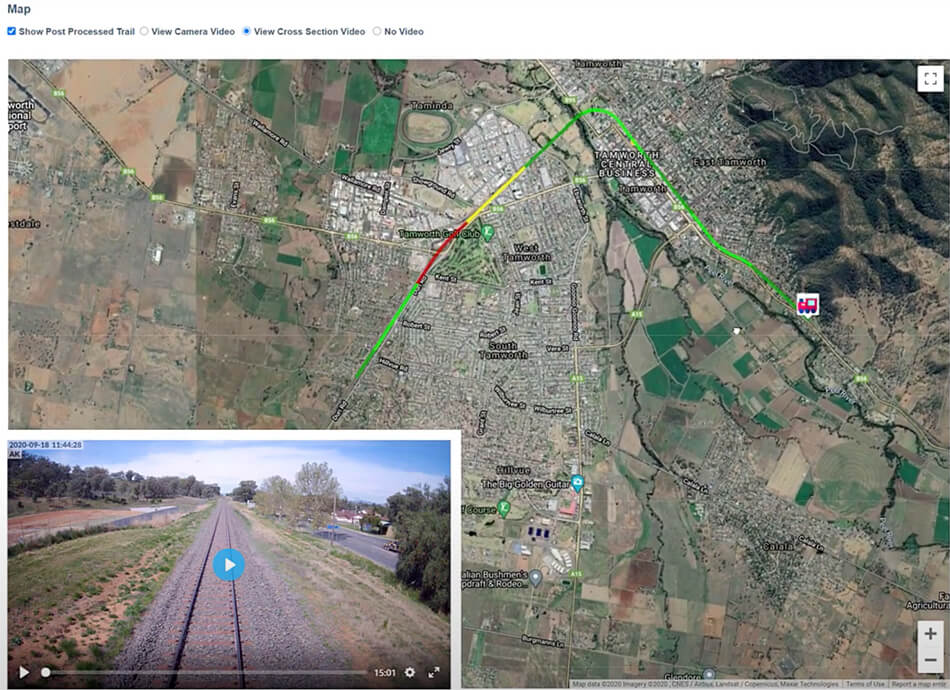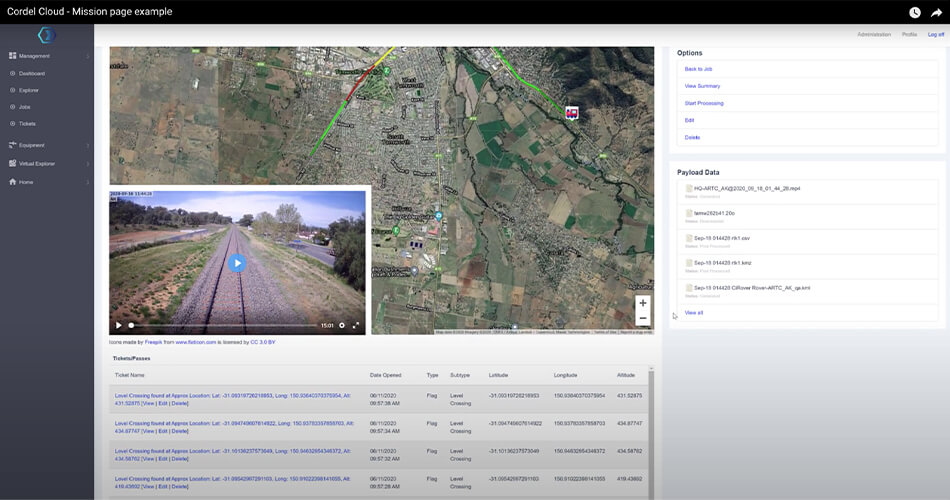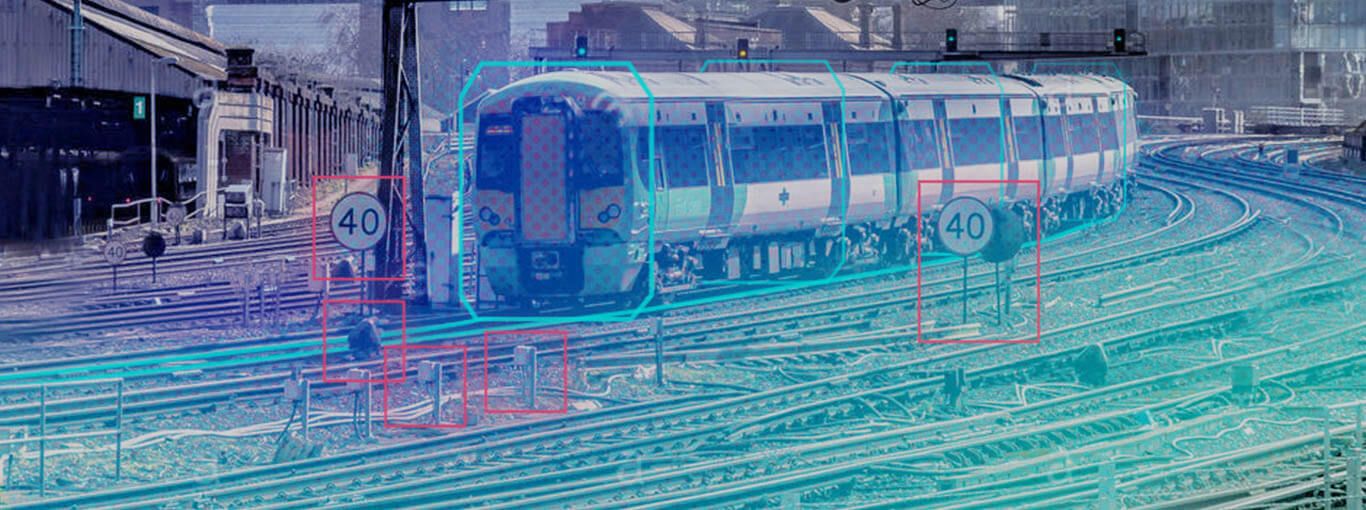Technology Section Feature
Nick Smith
Co-founder & CEO, Cordel
Infrastructure asset management is an important part of all industries – overseeing both dynamic and static assets within any system, ensuring continued operation, profitability and, most important of all, safety.
It’s no surprise that this job can end up being hugely labour intensive, but the fields of artificial intelligence (AI) and machine learning can provide enormous efficiency improvements.
By collecting and analysing data on a consistent basis, networks can make huge improvements to life-cycle optimisation, increasing productivity by as much as 25 per cent.
Having machines performing daily tasks is a boon for safety prospects as well, as frontline tasks with higher hazard levels can be automated, keeping boots off ballast.
At the end of the day, while human performance is susceptible to change depending on simple factors such as hunger, mood or fatigue and environmental conditions, a machine does not get tired. You’re going to get the same, high-level outcome whether it’s first thing in the morning or in the middle of the night.
1. Remote inspection technologies
More often than not, the network inspection process involves people either walking or very slowly driving along the network, using good old-fashioned eyesight and opinion to decide whether an area is suffering from degraded operation.
Even trains with specialist inspection or cars loaded with pavement scanners still require human operation, whether to drive the vehicle or carry out the scan, and the human component required to analyse the data is both the most expensive and least reliable aspect.
A recent paper, ‘Human Factors in Visual Quality Control’, cited a study that found “visual inspection error rate in simple control tasks” could be incorrect as often as 20% to 30% of the time.
A far more efficient way to acquire the necessary data required for effective condition monitoring is using remote inspection technology – such as sensors mounted on the front of in-service trains or buses, drones flying over rail corridors, or Internet of Things (IoT) devices such as stationery sensors.
The outcome can be far more efficient and produce more accurate inspection outcomes.
According to the paper ‘A future that works: automation, employment, and productivity’, published by the McKinsey Global Institute, “The automation of activities can enable businesses to improve performance by reducing errors and improving quality and speed, and in some cases achieving outcomes that go beyond human capabilities.”

Figure 1. AI techniques can be used to identify and predict areas of maintenance need, such as the colorized track sections shown on this display.
2. Trend and deterioration analysis
While these remote inspection technologies provide speed and accuracy that humans cannot hope to achieve, they also create raw, unstructured data – delivering millions of pixels to be analysed per frame of video, which can equate to literally billions of data points.
The sheer volume of data supplied is indecipherable for a person. As Mark Jaffe recently wrote for Wired, “The only way to keep up with this IoT-generated data and gain the hidden insight it holds is with machine learning.”
Thus, to ensure a value proposition from the volume of data provided, the processing needs to be automated via machine learning.
However, once you are doing a regular capture of the network that is being analysed by machine learning, you can begin to build reliable trend and deterioration models.
What’s more, rather than using a ‘spray and pray’ approach, you can filter down into the multiple epochs that your data provides, allowing models to be built that enable better decision making and more effective asset remediation works.
This means, rather than deciding whether to re-rail a section based on someone’s opinion that it was maybe a bit bumpy, you can use far more accurate information based on real-world data to make decisions.
With regularly updated information at hand, AI can mine the data to build up an area’s context and condition, and thus address areas of faster change, or deterioration – it’s akin to a surgeon performing keyhole surgery to treat a diseased area, as opposed to removing an otherwise healthy organ.
This allows for a far more targeted and therefore effective approach to upkeep and maintenance, because you are making decisions using real-world, up-to-date data – and the more data you have, the more targeted these decisions can be.
The result is a highly optimised life-cycle of your assets, ensuring better uptime and reducing maintenance costs and increasing safety for workers and passengers.
3. Predictive and prescriptive maintenance
Maintenance has largely moved away from the age-old time-based method – whereby work is done every x months, regardless of the asset’s condition – towards a condition- and risk-based method, in which work is performed on the required assets as needed.
However, with the data provided by remote inspection technologies, your trend and deterioration analysis will be able to tell you not only when maintenance is required, but when it will be required.
Quality, consistent data allows AI to predict more effectively when a failure point could occur and from there we can build machine learning algorithms that not only inform asset managers about deteriorated conditions, but also provide recommendations or instructions on what work should be prioritised.
As for the potential outcome, according to a recent position paper published by the Deloitte Analytics Institute, “On average, predictive maintenance increases productivity by 25%, reduces breakdowns by 70% and lowers maintenance costs by 25%.”

Figure 2. Predictive and prescriptive maintenance can be aided by automated ticket generation capabilities, such as the ticketing shown here.
Taking it a step further, by integrating machine learning across your asset management process, you can move into prescriptive maintenance models, whereby the information and intelligence inform when and what works should be carried out across a network of assets.
For example let’s continue our re-rail work example from above. Traditionally networks use multiple disparate data points, mostly from train driver feedback on the ride quality and condition of a section of track to design up their long term renewal plans and re-rail activities.
An alternative to this is to use data captured more often (sometimes weekly) to aggregate the condition and overall performance of not only a section of track but down to a granular level of detail, say every 5 meters could be quantified, leading to short and long term renewals projects to priorities and maintain sections of rail that require maintenance before needing to be re-railed.
Doing it this way enables the network then to only re-rail smaller sections of track which actually require it, therefore increasing the overall efficiency of the project, extending the lifespan of the rail track and its asset investments.
As IBM put it, “a predictive maintenance solution might recommend that a piece of equipment get overhauled based on analysis of vibration and temperature readings, but a prescriptive system would kick off a work order to field technicians based on this information and oversee the entire maintenance workflows.”
Human input will always be required in infrastructure asset management, but successful businesses are now embracing AI and machine learning to ensure both maximum safety and minimal wastage.
Using remote inspection technologies provides previously unimaginable levels of accuracy and insights that, when combined with machine learning to implement better maintenance models, can slash overheads and vastly improve asset life cycles.
Simply put, using AI and machine learning is the most cost-effective, efficient and safe means of performing infrastructure asset management.
About the Author
Transform your infrastructure inspections
Visit our contact page to get started today or book a demo to give us the opportunity to show you first hand how we enable deeper insights into critical infrastructure.

